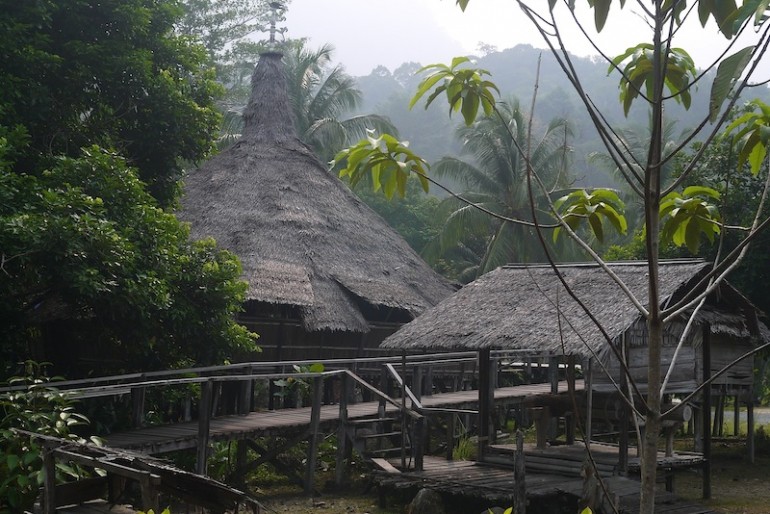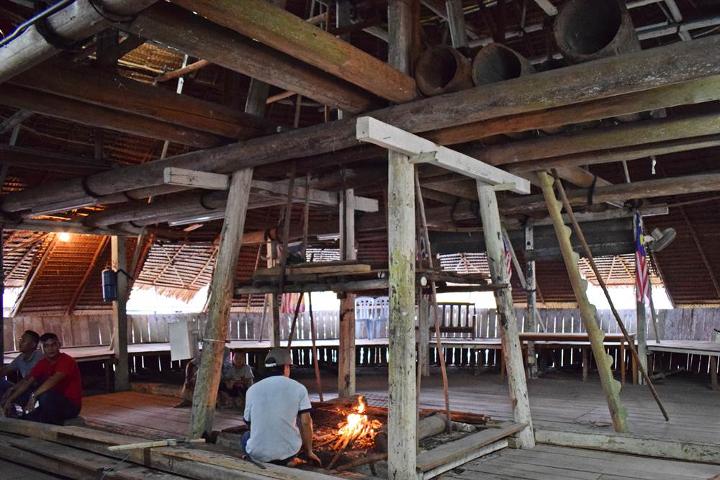Baruk
Sarawak is well-known for its rich culture and heritage, especially with the diverse population of different races and ethnic groups in the State. When we think of art, we often think of beautiful and well-crafted traditional items when passing by shops or enjoying mesmerising traditional performances during special events. However, one thing that we seldom pay attention to is the unique and traditional architecture in our State.
One such interesting traditional architecture is the Baruk. Baruk is the main section in a traditional Bidayuh longhouse and it has other names depending on the Bidayuh dialect spoken in certain districts. Therefore, it is also known as panggah, baluh, balui, balu, or pangarah. Due to a disease outbreak that killed their children, the first baruk in Sarawak is thought to have been constructed at Kampung Opar in Bau as a place to discuss solutions to the outbreak.
According to history, Baruk served as a gathering place for Bidayuh warriors in the past. Usually, weapons, gongs, wooden masks, and other personal items are placed inside the Baruk. Some Baruks may have human skulls of the enemies of the Bidayuh community that were hung in the Baruk back in the headhunting days.
The Baruk is thought to have served as a location for cultural ceremonies before the Bidayuh people embraced Christianity and it served as a place to practise Adat Oma. The Bidayuh people danced at the Baruk as well. Traditional musical instruments like the drums (sebbang) are also found in Baruks and are used during specific rites.
It is also fascinating that the Baruk was built without the use of nails and relies solely on ropes made out of tree bark and rattan to erect a sturdy building. The Baruk is constructed on tall stilts which provided the Bidayuh warriors an advantage over their adversaries.
There are so many more interesting facts to discover about Baruks and a few modern structures in our State were influenced by the building's octagonal or circular design.
Here are a few locations to check out the real Baruk, such as the Sarawak Cultural Village, Kampung Opar in Bau, and Kampung Benuk in Padawan so go visit these places and experience it for yourself!

(Baruk-Image taken from asianitinerary.com)

(Interior of Baruk-Image taken from borneodictionary.com)
References
Discover Bidayuh Traditional Architecture - Backyard Tour. Backyard Tour. (2016). Retrieved from http://mybackyardtour.com/bidayuh-traditional-architecture-%EF%BB%BF/.
Guri, C. (2022). Bidayuh Baruk. Asian Itinerary. Retrieved 10 August 2022, from https://asianitinerary.com/bidayuh-baruk/.
Hului, P. (2018). 10 things you need to know about baruk, the Bidayuh cultural house. KajoMag. Retrieved from https://kajomag.com/10-things-you-need-to-know-about-baruk-the-bidayuh-cultural-house/.
Zaini, A., Karsono, B., & Awang Sulong, A. (2018). From sacred to secular: Baruk architecture on secular buildings in Sarawak. IOP Conference Series: Earth And Environmental Science, 213, 012043. https://doi.org/10.1088/1755-1315/213/1/012043